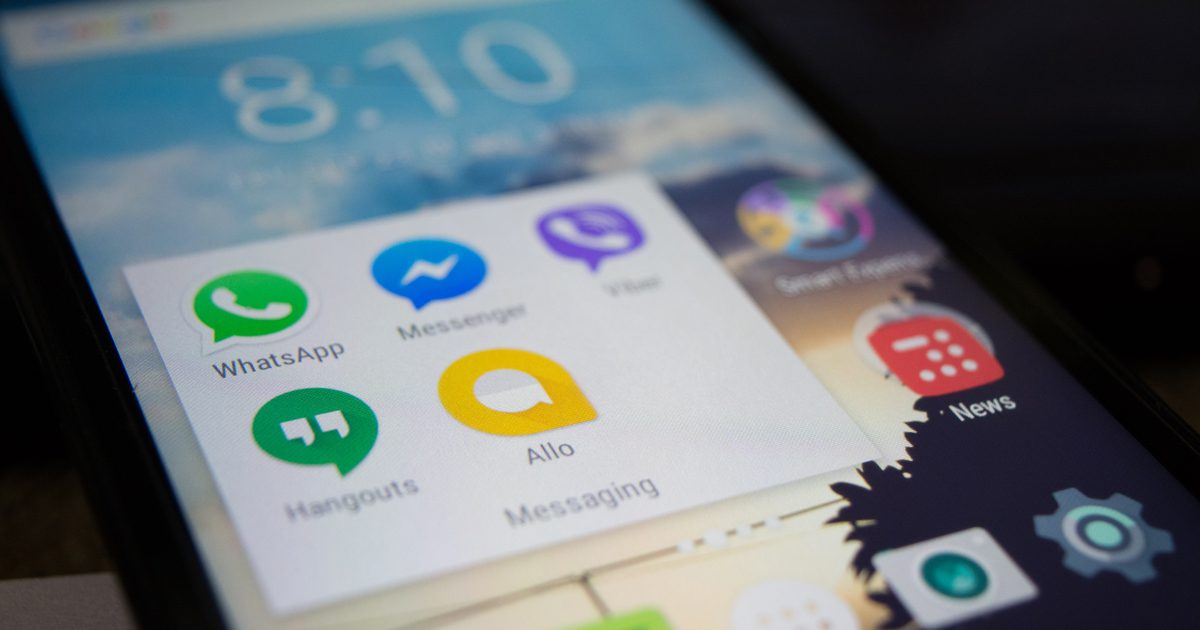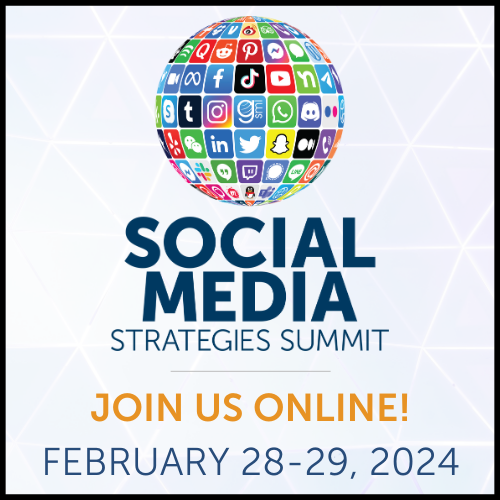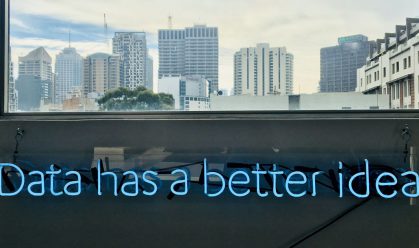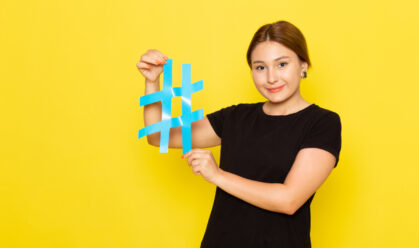What if I told you there was a way to reach 64% of monthly Facebook users in one place?
Such a spot exists, and it’s none other than Facebook Messenger.
Messaging apps now have more monthly active users than social networks, and Facebook Messenger alone has 1.2 Billion users.
18 million businesses are already active on Messenger each month, and in July Facebook announced that Messenger Ads are going global – signifying huge potential to monetize their far-reaching Messenger audience.
The business case for Messenger ads is an easy one: 56% of people would rather message a company than call customer service, and 53% of people are more likely to shop with a business they can message directly. It’s projected that the average revenue on these chat apps will reach $15 per person by 2020.
So, what are Facebook Messenger ads?
Companies can choose from three primary types of Facebook Messenger Ads: Messenger Destination, Sponsored Messages Placement, and Messenger Home Placement.
Destination Ads
Destination ads appear in a user’s news feed and link to a new Messenger conversation with the company. These ads are nearly identical to non-Messenger Destination ads, except that the call to action button is catered toward conversation with a Messenger app symbol.
These ads are a great option to drive traffic to your chat bot, or to lead readers to your site after they view an additional message or offer from you.
Here’s an example of a Facebook Messenger destination ad:
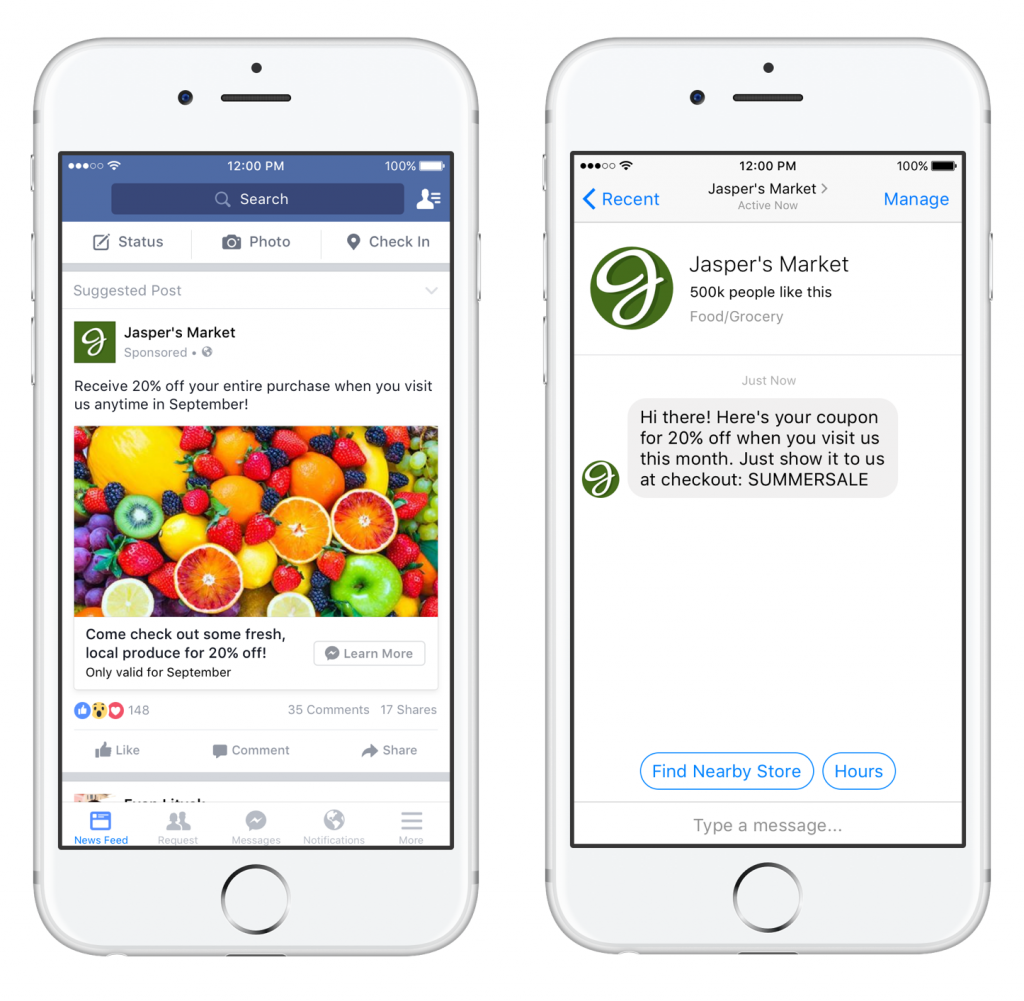
Sponsored Facebook Messenger Ads
Sponsored Facebook Messenger ads appear as a new private message to a user. Since this type of ad is more personal, you can only target these Sponsored ads to individuals who have messaged your company before.
This type of ad would work best if you want to send a tailored offer or update to past customers. Jon Loomer details the setup process and offered the following example:
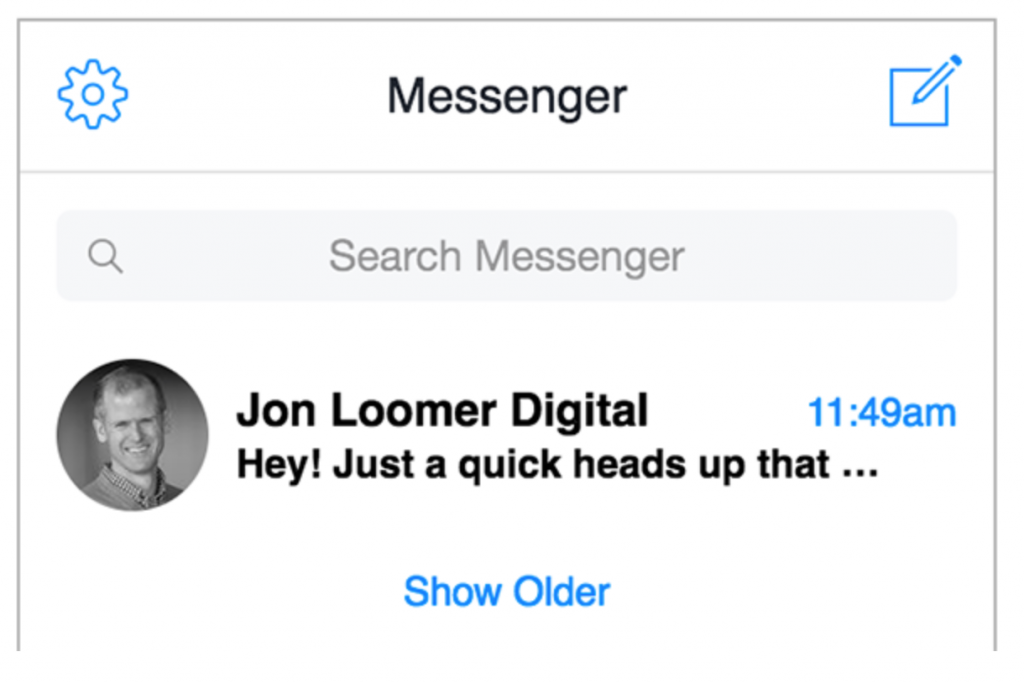
Facebook Messenger Home Ads
Facebook Messenger Home Ads appear in a user’s lineup of messages and don’t necessarily have to lead to a chat conversation between the company and user. Messenger Home Ads can be set up with either a Traffic or Conversion objective.
If you’re targeting a cold audience, for example, you may choose the conversion “view content” as your objective. These ads would also work well if you simply want to drive traffic to a landing page.
As opposed to Sponsored Facebook Messenger ads, Messenger Home ads have a featured image and copy, as shown in the Techcrunch example:

Companies can also use chatbots with Facebook Messenger. These bots can either be programmed with specific rules and commands or powered by A.I.
Facebook Messenger currently has around 100,000 bots in action each month, and companies are seeing serious results.
Snap Travel, for example, uses an AI-powered Messenger bot to book travel and reached $1 million in bookings on the platform within a year.

While Facebook Messenger ads have the ability to deliver a great ROI, simply showing up is only half of the battle. To truly get your money’s (and time’s) worth, here are 10 tips for creating Facebook Messenger ads that convert.
How to Optimize Facebook Messenger Ads for Conversions
1 – Tailor Offers for Your Demographic
Different generations approach businesses and purchases differently, and the same extends to which offers are most enticing. AdStage and Statista point out that each generation has a different willingness to receive specific types of offers within Messenger.
For example, Millennials are more likely to be on board with happy hour special announcements than their Baby Boomer counterparts.
Tailoring your offer and messaging for your demographic makes the ad more relevant to their interests and needs, and leads to higher conversion rates.
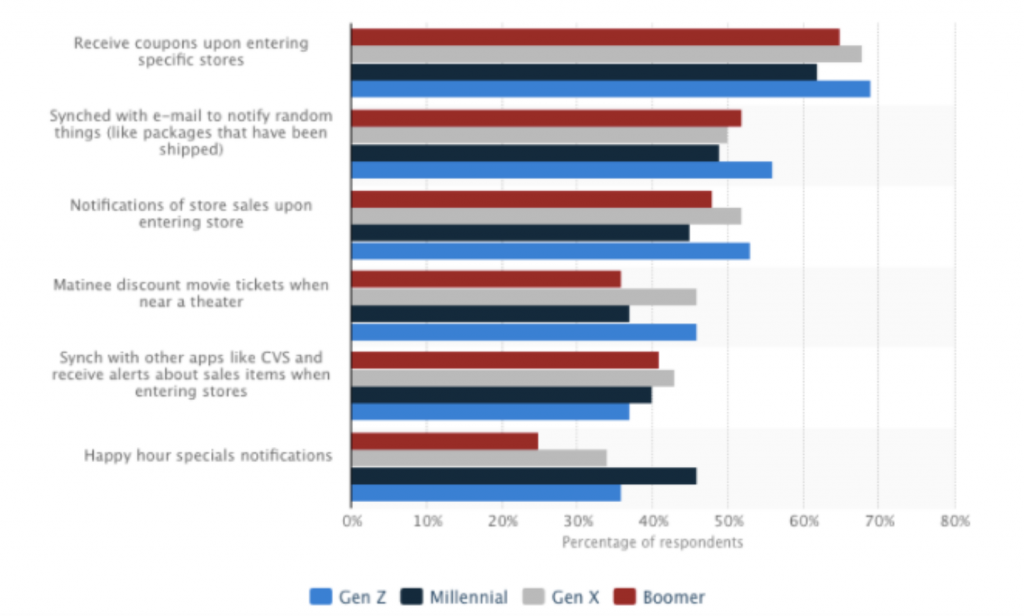
2 – Personalize the Experience
While checking the relevance score for ads on your Facebook Ads reporting tools can give insight into how well an ad fits a customer’s interests, Facebook Messenger Ads and bots can take personalization one step further.
Nordstrom’s chatbot, for example, asks questions to learn about the customer and then suggests items they may be interested in. Not only does the customer feel like they’re receiving exceptional personalized attention, the info can also be used for future ad targeting.
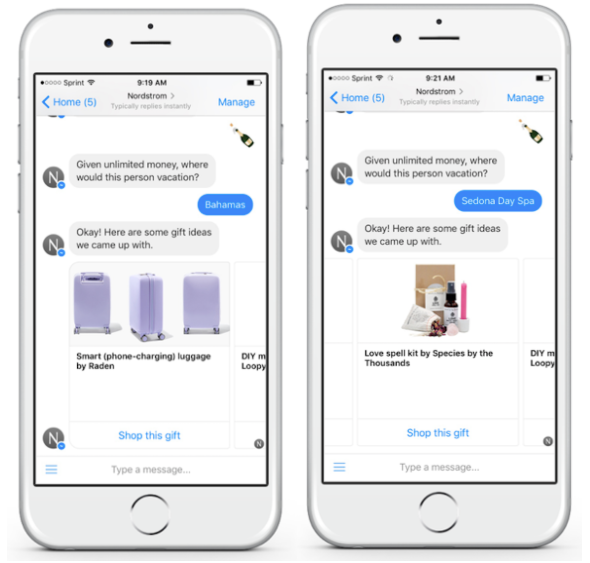
3 – Make it Easy for Customers to Take Action
Another interesting Facebook Messenger Ad case study is Sephora’s appointment booking bot. The beauty brand began with a Facebook Messenger Destination Ad that prompted users to “Book Now”, and the chatbot would assist customers once they were in Messenger.
The Sephora Assistant allowed customers to book in-store appointments in 3 easy steps, as opposed to 8 or more required with other booking channels. This ease of use resulted in 11% higher booking rates.

4 – Have a Clear Call to Action
Facebook Messenger Home Ads will automatically have a CTA button, but you can still optimize it. Making sure your call-to-action aligns with your goals will make a Messenger and more effective.
Adding questions or action words to ad copy also strengthens your CTA. “Learn More”, “Shop Now”, and “Sign Up” are the most commonly used preset Facebook Ad call-to-action buttons. Another way to make CTA text stand out is by using negative words, such as “Worried about your credit score?”.
Below, Absolut Vodka tells customers to type “Start My Absolut Night” in messenger to receive a free Lyft ride, and their CTA button aligns with their copy. This Messenger Ad campaign resulted in a 4.7X sales lift, and a 1.2X redemption rate than the campaign benchmark.

5 – Be Friendly and Conversational
Facebook users are accustomed to seeing ads in their news feeds, but up until recently, Messenger has been a friend- and family-only zone. While the news feed is public, the Messenger Home page is filled with private conversations. Users are expecting to encounter a friendly tone, and ads should fit in.
Tommy Hilfiger took this approach with a friendly chat bot for its TMY.GRL launch. Ads with imagery from the TMY.GRL runway show prompted users to use the chat bot with a “Shop the runway with TMY.GRL” call to action.
The conversational chatbot led to 60,000 messages exchanged, an 87% return rate to the Messenger bot, and 3.5X more time spent with the bot than any other digital channels.

6 – Use Emojis
More than 5 billion emojis are sent on Facebook Messenger every single day! Using emojis in Facebook Messenger ads is another way to match the tone users expect to find in Messenger. Plus, one LeadsBridge experiment found that using emojis in Facebook ads boosted leads by 2,000%.
7 – Split Test Ads
Try split testing four ads with two designs/photos and two sets of ad copy. Performance between the different ads can be compared, and you can learn what works best for your particular audience.
Testing different versions of Facebook ads keeps frequency of exposure down. An AdSpresso study found that ads with an average frequency of nine had a cost per click that was 161% higher than ads with a frequency of one.
While Scoro didn’t use a Messenger Destination ad in this example, they did put emojis and multiple versions of ads to the test. The difference between the ads is subtle – there’s a single red flag emoji in the title of the version on the right. However, the emoji version had a CTR of 0.846% while the non-emoji ad had a CTR of 0.351%.

8 – Add a Sense of Urgency
Tieks by Gavrieli understands that a sense of urgency is a strong motivator to act. Their Facebook Messenger ads are targeted at users that have interacted with the brand in the past but haven’t been active with them lately.
Their ads not only touch base with the customer, they present a recent limited-release item that the customer may be interested in.
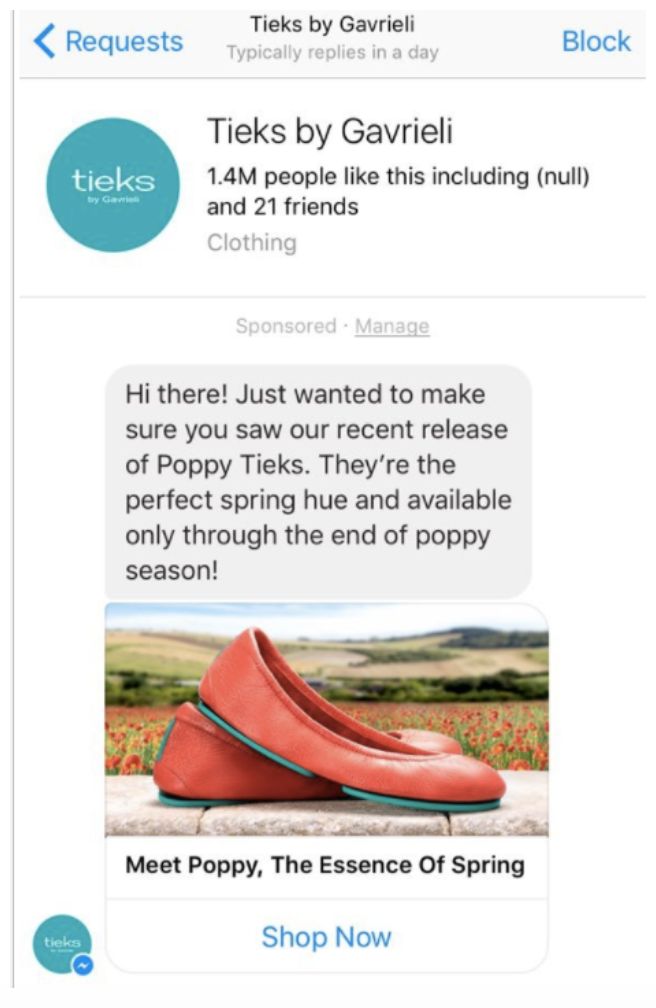
9 – Make the Value Proposition Clear
An effective Facebook Messenger ad needs to have a clear value proposition in order to convert. Readers should easily understand “why” they should click. Ad copy that is too long or takes too much time to “get to the point” is a Facebook Ads “don’t”.
New welcome screens for Facebook Messenger bots are a great way to communicate a business’ value proposition. This example for The Vegan Baker has a welcome screen that let users know exactly what benefits they can expect from signing up.
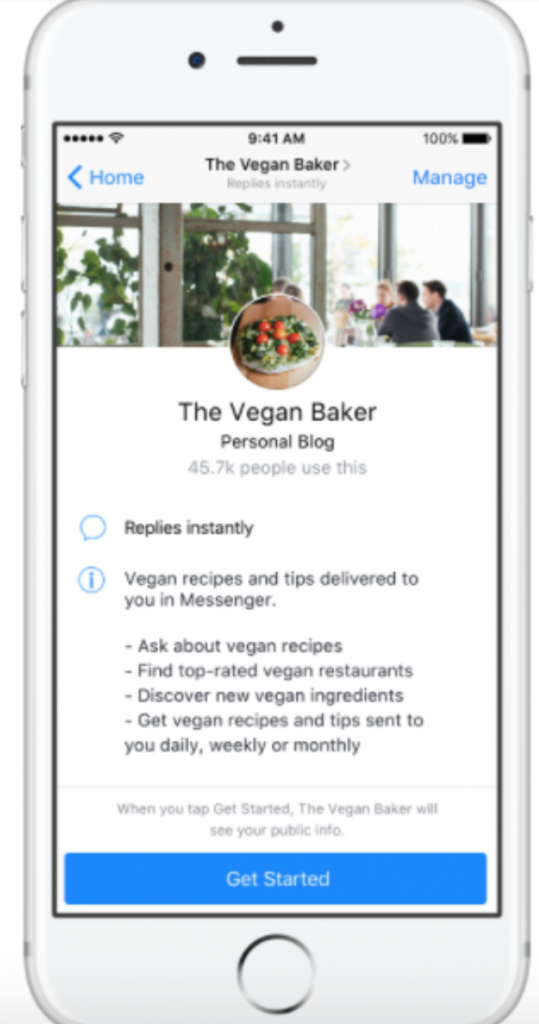
10 – Use Eye-Catching (Read: Not Cheesy) Images
Studies have found that images are responsible for 75%-90% of an ad’s performance.
Images are the first part of an ad a person looks at, followed by the headline and then the copy.
So what makes a great ad photo? It needs to be able to stand out and match the offer at hand. For example, this FreshBooks ad’s pop of color catches the eye.
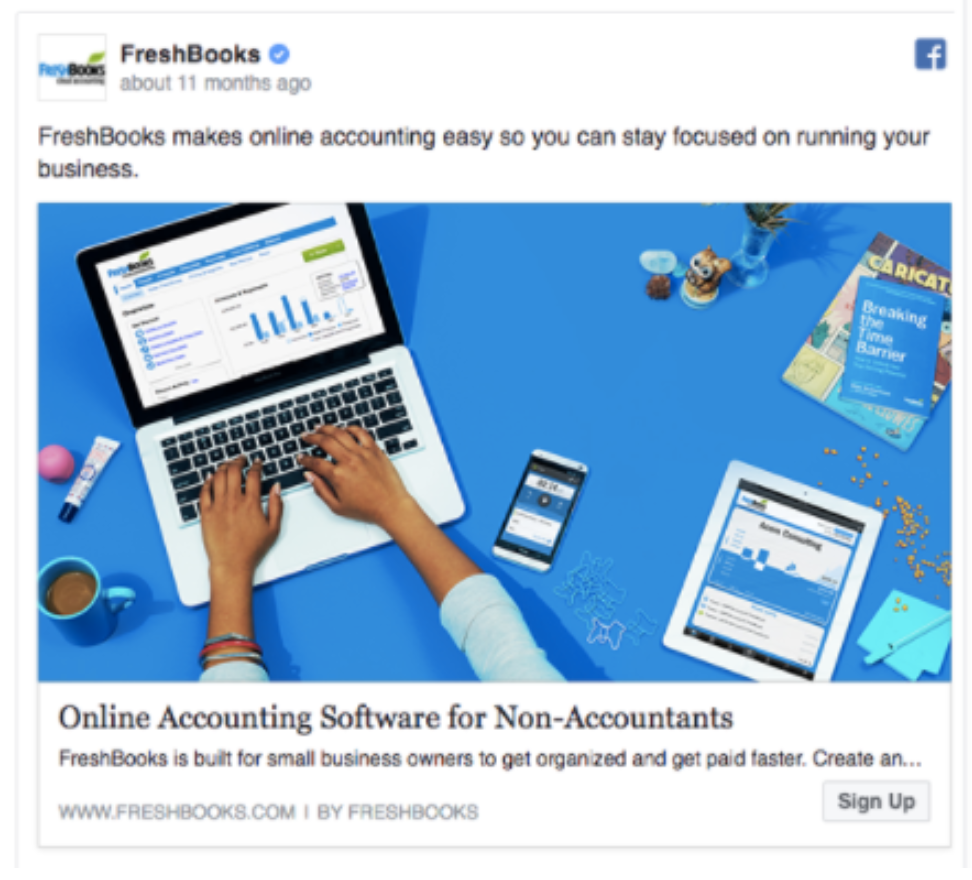
Creating the Best Ads for Your Business
Just like the perfect pair of jeans, there’s no “one-size-fits-all” strategy for Facebook Messenger ads. As with anything, there’s bound to be some trial and error before finding which one (or two, or three, or more) of these tips work best for your customers.
Setting and forgetting Facebook Messenger Ads is a major don’t. Even if you’ve used all of the tips above, tweaking ads and constantly monitoring their performance is the best way to ensure the greatest ROI.
Have you tried any of these strategies before?

